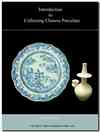Antique Valuation
An antique valuation is different from an appraisal in that it does not need to emphasize authenticity. However, normally the appraiser or valuer will check for authenticity during a direct offline valuation. After all, it is not good for the professional if the value of a genuine item is attributed to a fake, or vice versa.
It may be a wholly different matter altogether when an online valuation is
involved. The valuer may not get images of the best quality and instead
of requesting more photographs, he or she may still quickly finalize the
valuation with some wording to the point that the item appears to be of the period...or probably is of the period.
This isn't very helpful to the owner and makes it necessary to to have
an antique checked separately for authenticity, in addition to the
valuation.
With valuable antiques it is better not to rely on a valuation
alone, but rather request a full appraisal as this should also clarify
an antique's authenticity.
Provenance
And here is the subject of provenance again. (Read about my view on provenance.)
Appraisers, auction houses or valuers may ask you for
provenance, and if your item has come from a well known source that is
proven as reliable, then it may help when estimating the authenticity
and value of your item.
Why request an antique valuation?
A valuation puts a price tag on an item. This can be necessary for
insurance purposes, selling it at the right price, or just to fulfill
curiosity.
|
While it is possible to research the value of antiques yourself on Ebay or some other online venue, a valuation done by a professional antique appraiser or valuer gives some peace of mind. It may also be useful to confirm the current price range of something valued years earlier. As with an appraisal, a valuation is a conclusion based on experience and relies often on data of past auction sales. A good knowledge of the market situation is required, as the value of antiques changes with the market. |
Online antique valuations
Some appraisers claim that appraisals or a valuations can only be done with the real thing, there are many others who think appraisals or valuations via Internet using digital images are feasible. Some even think that in as much as 95% of all cases a proper valuation is possible; the rest needs a hands-on inspection.
While it is true that an item's condition is an essential part of
its value and needs to be taken into account, as long as the pictures
used for the valuation are clear and of good resolution there is no
really good reason why the value could not be estimated. If the pictures
show even minor blemishes, as is easy with today's digital imagery, the
valuation can be fairly accurate.
In individual cases the result can be affected by the inability of using a magnifier, checking the weight, density of the clay, etc.
Related pages:
Factors related to the Value of Antiques when selling or buying

